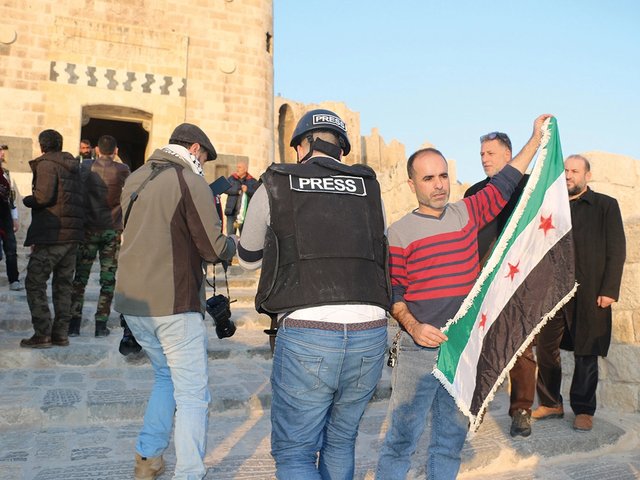Museum With No Frontiers organises exhibitions in the form of visiting trails and the virtual environment, and The Ayyubid Era is the published version of its Medieval Syrian section. The Ayyubids, originally Kurdish, were the dynasty founded by Saladin in 1183. Their rule was effectively ended by the invasion of the Mongols who captured Aleppo and Damascus in 1260 and were in turn defeated by the militarily successful Mamluks. In their short rule, the Ayyubids were among the great building dynasties, founding fortresses, palaces and religious buildings. Saladin himself was buried in Damascus.
The book takes the form of itineraries including museums, monuments and archaeological sites, stretching chronologically beyond the boundaries of the Ayyubid period, with historical sketches, essays on culture and science and practical travelling advice, now sadly redundant.
How many of these buildings survive? Records are being kept, as far as possible, by the American Schools of Oriental Research (ASOR) project based at Boston University, their sources including satellite imagery as well as conventional reports. The ASOR project has the support of the US government.
Yasser Tabbaa, who has contributed the section on Aleppo, notes that the damage includes the great portal and parts of the curtain wall of the famous citadel of Aleppo and the Great Mosque, where the minaret dating from 1094, one of the most famous in the Islamic world, has been wholly destroyed. The early 13th-century Madrasa Sultaniyya has been severely damaged and the great Medieval Souq, the most famous market in the Middle East, nearly entirely consumed by fire. Professor Tabbaa himself has been particularly saddened by the wreck of the Matbakh al-’Ajami, an Ayyubid palace with exquisite vaulting.
In Homs, the Great Mosque of the 12th to 13th century has been damaged, as has the nearby Crusader castle of Crac des Chevaliers. It is probable that the catalogue of destruction could be added to daily. ASOR’s Syrian Heritage Initiative team has identified nearly 9,000 sites in Syria, of which more than half have been damaged. Numbers, of course, can only suggest the extent of the loss: much of this architecture stretches back to antiquity and early Christianity and celebrates harmonious transition between religions and cultures. To many, these structures constituted a living presence. This book is a brave, if distressing, venture of record: its value now will be historical, and a means of checking what has been lost.
Not a practical guide but an attractive collection of Western travellers’ accounts of a city that astonished most of them and appalled some, is Philip Mansel’s Aleppo: the Rise and Fall of Syria’s Great Merchant City. Unusual in concentrating on the Ottoman period, it is prefaced by Mansel’s brief sketch of the city’s history, and takes us up to modern times to include the rise of the Assads.
Both these works inevitably have something of the elegiac, but together they remind us that Syria has seen many phases of destruction in its long history. It is not impossible that Aleppo’s courageous people may again create their phoenix city from its ashes.
I am grateful for the help of Professor Yasser Tabbaa with the above information.
• Jane Jakeman has a doctorate in Islamic art and architectural history from St John’s College, Oxford. She has lectured on Islamic art and has travelled widely in the Middle East. She has been on the staff of the Bodleian and Ashmolean libraries and was librarian to the Oxford English Dictionary
The Ayyubid Era: Art and Architecture in Medieval Syria
Abd al-Razzaq Moaz, Yasser Tabbaa, Zena Takieddine et al
Museum With No Frontiers, 288pp €19.50 (pb)
Aleppo: the Rise and Fall of Syria’s Great Merchant City
Philip Mansel
I.B. Tauris, 224pp, £17.99 (hb)


